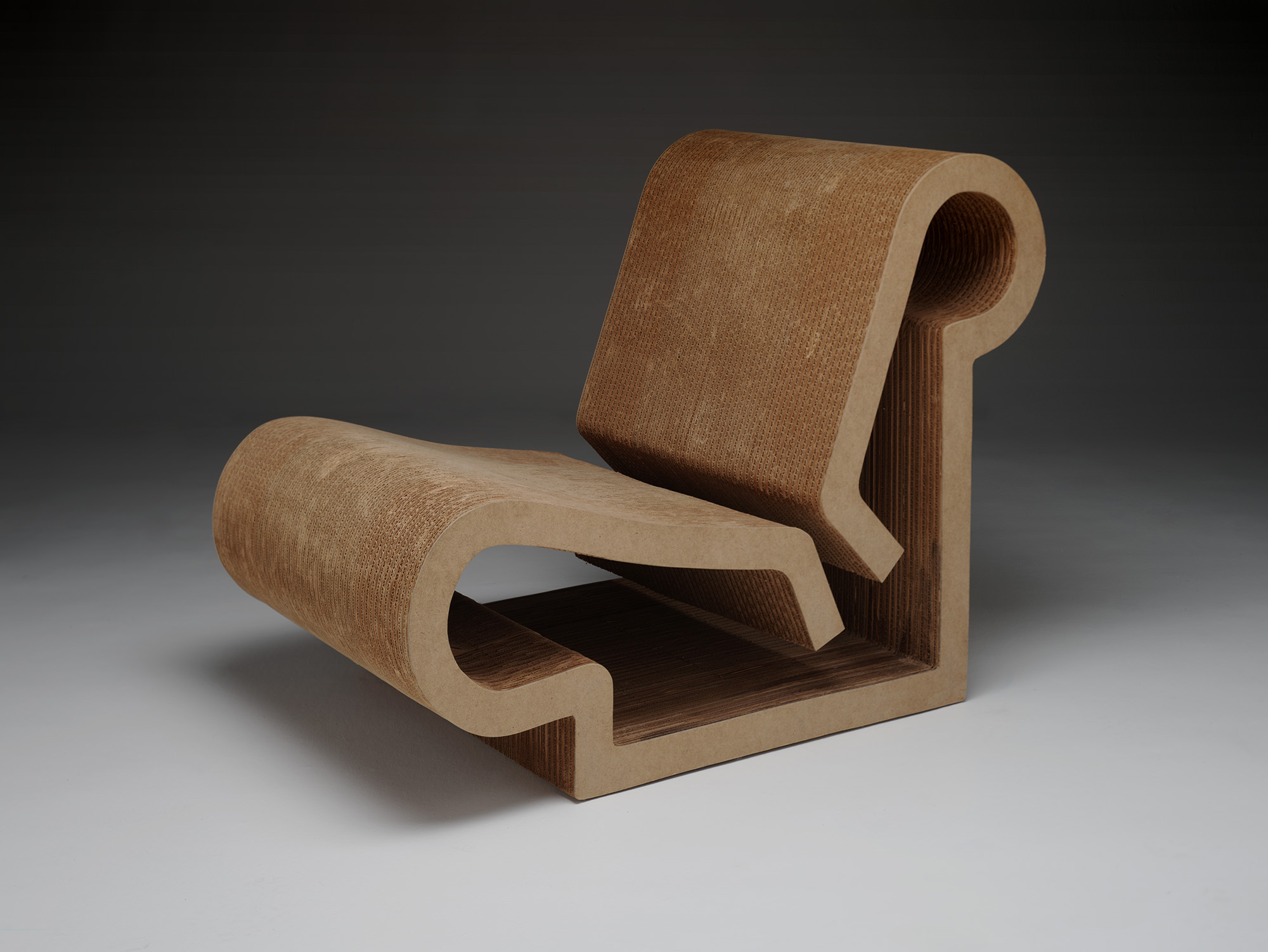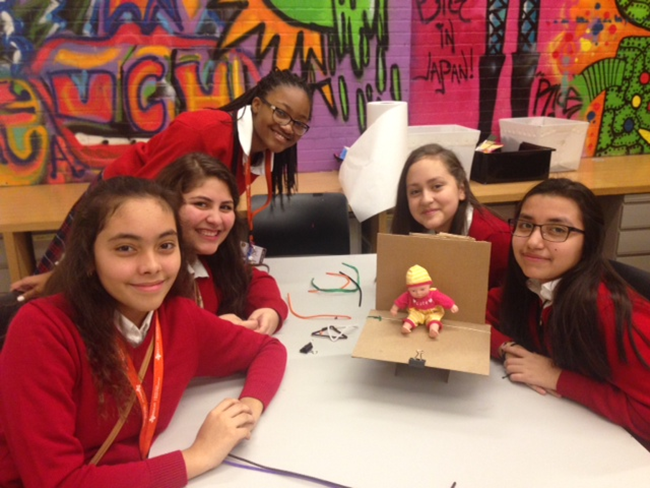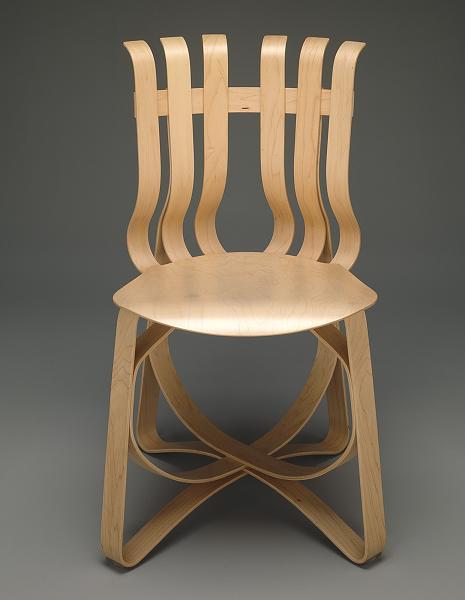We’ve all heard about the importance of STEM–science, technology, engineering, and math–to our education system in a technology-focused world, but what about the creative thinking that goes hand-in-hand with these subjects? With this in mind, the Rhode Island School of Design began a push to include art, transforming STEM to STEAM. As an educator, you can find many great STEAM resources here at the Dallas Museum of Art!
For several years, DMA Education Staff and our group of STEAM Docents have been working together to develop and test STEAM tours and activities for multiple three-hour long visits by eighth grade students from Irma Rangel Young Women’s Leadership School. Themes for their visits include Art and Innovation, Design, Engineering, Conservation, and Nature and Art.

Frank O. Gehry, “Easy Edges” chair, 1971, Dallas Museum of Art, 20th-Century Design Fund
The objective of their time at the Museum is to emphasize the connections between art, science, technology, engineering and math, especially in how artists and scientists invoke similar practices and ideas. One of their visits explores the innovative design of Frank Gehry’s “Easy Edges” chair. Students learned how Gehry layered corrugated cardboard to a two inch thickness to create an object that is aesthetically pleasing while still maintaining the ability to support considerable weight.

Rangel students creating a cardboard chair that can hold the weight of a doll, inspired by Frank Gehry’s “Easy Edges” chair. The catch? No glue or tape!
Two of our amazing STEAM docents, Susan Behrendt and Susan Fisk, asked their Rangel students the following question to see what they had learned about STEAM:
How does ART relate to STEM (Science, Technology, Engineering, Mathematics)? How do they relate to you?
Art relates to STEM because as you think and make the art you have to think about all of the things in STEM. Carefully analyzing the piece and including those things make it more eye catching. They relate to me because the art makes a study. – Genesis, May 2014
Art relates to STEM because we use it everywhere and it’s used to describe some of the events in history. Because of art we know far past back in history. We have to know all of these subjects for a good education. – Gallea, May 2014
Art is in everything. An example is geometry. Geometry incorporates art, science, and math. Another example is architecture. Architecture uses art, math, and engineering. It relates to me because I want to be an architect. – Isabella, May 2014
This spring, we lead our first STEAM in-service training for 170 art teachers from Fort Worth ISD, and released a comprehensive STEAM guide to our docent team. You can schedule a docent-guided tour or a teacher in-service yourself, and come explore the many connections between art and STEM here at the Museum!
Lindsay O’Connor
Manager of Docent and Teacher Programs
